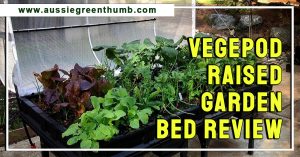Aphids are the most common garden pest in the world, with thousands of species found native in Australia. However, the aphids we most commonly find in our gardens are the common greenfly and blackfly, which most prominently affect young vegetative growth.
Any keen veggie gardener will know just how voracious these herbivorous pests can be. They will stunt the growth of seedlings and perennial plants in spring and can continue eating plants right through summer and autumn.
Follow our guide to get on top of the problem, and choose between organic pesticides and natural prevention.
More...
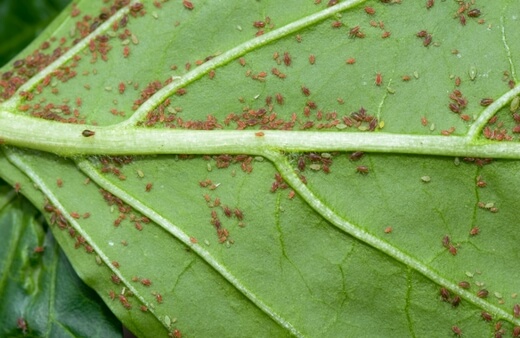
Scientific name: | Family: Aphididae; Superfamily: Aphidoidea |
|---|---|
Common Name: | Aphid, Greenfly, Blackfly, Woolly Aphid, etc. |
Type: | Winged, mostly Herbivorous pests |
Size: | 1-7mm |
Key features: | winged adults, small white larvae |
Colour: | Green, white, translucent, black, brown, yellow |
Effects: | Eats plants, causes fungal problems |
Prevention: | Predators, Deterrent plants, Organic pesticides |
What are Aphids?
Aphids are small insects that are wingless in spring, and selectively lay winged offspring in warmer months. Aphids can be black, green, white, yellow, red, or translucent, with thousands of species-specific variations.
However, their oval-shaped bodies, which are typically 2-3mm long, and 1-2mm wide are easily identifiable when they gather in clusters along young stems – often accompanied by ants or ladybugs.

Aphid’s Natural Habitat
Aphids are one of the largest living families of animals on the planet, with over 4000 species of aphids within ten different families. That makes them one of the most successful creatures in existence, with fossil records dating back to about 280 million years ago.
They are evenly distributed in every corner of the planet, and reproduce at a rate of 80:1 in each season, with reproductive cycles taking place right through the year and only interrupted by frost.
Aphid Life Cycle
Adult females are at the start of a fascinating year-long lifecycle, which sees aphids going from dormant eggs, which overwinter through harsh frosts, before emerging as wingless juvenile aphids.
The juveniles climb the plant looking for fresh growth, and remain wingless until they reach maturity. If too many aphids congregate, some of the now adult females will develop wings and fly to new plants. The remaining adults can then select whether to give birth to nymphs (not eggs), or clone themselves through a process called thelytokous parthenogenesis.
Thelytokous parthenogenesis is to lay unfertilized eggs that hatch into identical replicas of the adult. If the adult has no wings, neither will the young.
As the weather begins to cool, aphids deliberately lay a mix of male and female eggs. The females are all winged, while the males are wingless. Females fly between plants to extend the gene pool.
What Plants Do Aphids Affect?
Most aphids have no plant preference and will congregate on the new growth of any soft-celled plant. There are, however, several species of plant-specific aphids that target groups of plants, or have distinct preferences.
Blackflies, for example, prefer brassicas and legumes and are attracted to their strong spring scents, which they can detect from several miles away.
Others, like the Cherry Blackfly, will travel to the new annual growth of cherry trees every year. They rarely cause significant damage to mature plants, but if they do cause damage, keep reading for safe ways to get rid of aphids in your garden.
How to Identify Aphids
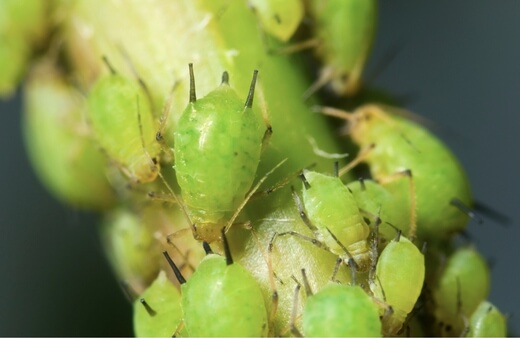
Aphids are varied in colour, so can be hard to identify, and are commonly mistaken for thrips and mealybugs or scale insects. However, there are some clear identifiers that transcend species differences.
All species of aphids have fat oval-shaped bodies, with a pointed end to their abdomen. They gather in groups on young shoots of whatever plant they infest, and typically sit quite still on the plant, sucking chlorophyll from the stem, or lower parts of young leaves and buds.
Where to Find Aphids on Plants
Aphids are easiest to find in spring and summer, where they congregate in large numbers on young shoots. Otherwise, green plants will appear black at a glance, but are covered in tiny insects when you look more closely.
Signs of Aphid Damage on Plants
Aphid-infested plants will usually have no problems, as aphids self-manage their environment, and benefit from keeping plants alive and healthy. They will leave depleted plants, and arrive at plants that can cope with an infestation by default.
However, some plants may continue living, but fail to crop as a result of aphid infestation. Broad beans suffer particularly badly from blackfly, while common white aphids can prevent tomatoes and peppers from fruiting or flowering.
Over time, aphids will also create the ideal conditions for fungal problems to occur, with stems and leaves which have infiltrated bite wounds and an overly humid environment caused by their sugary secretions (called honeydew).
Types of Aphids
There are too many types of aphids to list in this article but there are three groups of aphids that are much more common in gardens: tree aphids, blackfly, and greenfly.
Blackfly

Blackflies are the most problematic aphids in veggie gardens, as they target brassicas (cabbages, broccoli, kale, etc.) and legumes (beans & peas). They can congregate in such high numbers on brassicas that the crop becomes inedible, while on beans they often limit the development of flower buds, and prevent fruit from developing.
Greenfly

Greenflies are less problematic as they generally develop with wings so they move between plants, rather than congregating in colonies. They are still frustrating, and in large numbers increase humidity on young shoots, and can cause fungal problems like bud rot.
Tree Aphids

Tree aphids, including Cherry aphids, are slightly larger than most types of aphids and can cause big problems even with established trees. Because trees have the most accessible sap around the base of flowers and on new shoots, aphids stunt the development of fruit.
They can be pretty hard to spot, but curled leaves and puckered growth are clear signs of problems, so check any disfigured growth on trees up close to be sure.
What Causes Aphids?
There is no one factor that explicitly causes aphids. They are a sign of spring, attracted to warming temperatures and fresh growth, and will converge on healthy plants as a natural occurrence.
In many ways, aphids are a sign of your garden’s health as they are predominantly attracted to healthy plants, and will typically leave unhappy or struggling plants alone.
However, there are a few things that will potentially exacerbate an aphid problem:
Shelter
Aphids do best in sheltered positions as they are easily washed off by heavy rain, so are more likely to choose healthy plants in a warm location under some protection.
If you have veggies growing in the garden under cover, make sure the cover is completely aphid-proof as any gaps create the perfect entrance to their ideal home; warm, sheltered, dry, and on healthy cultivated plants.
Lack of Predators / Biodiversity
Severe aphid infestations can be an indicator of a lack of biodiversity in your garden, just as much as a lack of aphids is a good sign of a healthy ecosystem. A lack of natural predators like aphidius colemani wasps and ladybugs allows aphid populations to boom.
Small garden birds will feed on aphids in spring as an easily available source of protein for their chicks too.
Ants
One thing that really can make an aphid population worse is ants. Ants are well-known as organised, intelligent insects, with nest hierarchies, and incredible team working skills. If that wasn’t impressive enough, did you know that they can also farm?
Ants adore the sweet secretions of aphids, usually called honeydew, which they leave all over the plants and leaves they inhabit. They also seem to understand the life cycle of aphids and know that a single wingless aphid will repopulate empty plants.
With that in mind, the ants will move wingless aphids to healthy, un-infested plants to create a new population, and increase their honeydew stock. You can often see ants carrying aphids from one plant to another in early summer, and it is well worth looking out for as a fascinating bit of natural science in your own garden.
How to Prevent Aphids
If you act fast in late winter or early spring, there are many ways you can prevent aphids. Start by thinking about aphid deterrent plants, and how to care for your garden in ways that create barriers for aphids.
And maybe consider rehoming or discouraging those mischievous ants, which will bring them in despite your best efforts…
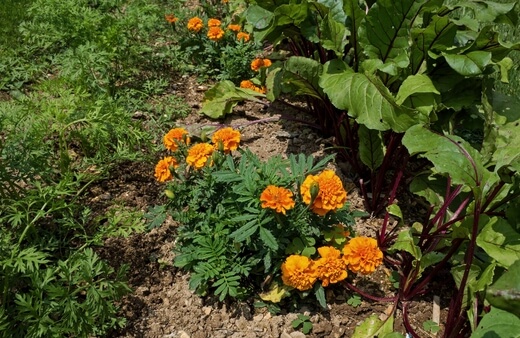
Growing Aphid Deterrent Plants
There are dozens of plants that prevent aphids, but there are a few that really, really work. Essentially anything with an especially strong fragrance will discourage aphids because they enjoy plants with earthy or neutral flavoured sap.
Plants like rosemary and lavender are great for creating low hedges around your borders, and will partially disrupt aphids, but annuals are the most effective attack.
The most effective aphid deterrent plants are:
- Marigolds - Refer to our growing and care guide for marigolds here.
- Mint
- Basil
- Alliums (onions, garlic, and chives) - Find out how to grow garlic here.
Basil, mint, and marigolds have intense fragrances, which will not only stop aphids from landing on them but will prevent them from settling in greenhouses or on nearby plants altogether.
If you’re planting up a veggie garden, pots of marigolds and mint should be a no-brainer. And try basil next to your tomatoes. It’s a great deterrent but has the added benefit of being used in all the same meals.
Alliums are slightly less effective, but will generally not suffer from aphids themselves. A ring of chives planted around pots and containers will generally deter aphids though.
Organic Aphid Prevention
For indoor plants, you can stop aphids by mixing up essential oil sprays which can be sprayed onto pots and onto the soil. The sprays will deter aphids as well as other pests from settling on your plants, and add floral fragrance to the house.
I generally use peppermint essential oil because it smells nice, but it’s pretty potent and you should avoid spraying it directly onto foliage.
My Organic Aphid DIY Recipe
- 2-3ml neem oil
- 3 drops peppermint oil
- 3 drops dishwashing liquid
- 1L water
How to Get Rid of Aphids
Organic Aphid Treatment
Aphids are a natural part of the food cycle in any garden, so treating them with any chemical insecticide will harm other insects, birds, and wildlife. In the long run, this creates poor biodiversity and will mean more aphids in years to come.
Stick to organic prevention and treatments, and follow our advice below for using these aphid treatments without harming wildlife.
The Best Aphid Treatments & Organic Killers
1. Plant Needs Cold Pressed Neem Oil
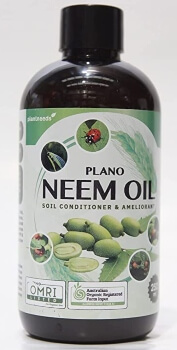
Source: amazon.com.au
Neem oil is a natural extraction from the seeds of the neem tree. It is both a deterrent and a surfactant. It kills any insect it touches, and deters others once dry, so be careful when applying it that you don’t spray it onto pollinators, and use it either very early in the morning, or in the early evening when bees and wasps are less active.
Plant Needs Neem Oil is the best value neem oil you can buy, and when it comes to choosing the right neem oil, value is everything. There’s no such thing as a ‘better neem oil’.
It’s all the same stuff, so save yourself some money and go for a cheaper option, provided it's 100% neem like this bottle from Plant Needs.
Pros
Cons
2. Stingmon Sticky Fly Traps

Source: amazon.com.au
Sticky fly traps are useful in summer and late autumn when aphids are actively flying from one plant to the other during the breeding season. Their colour attracts aphids, and once they land, they can’t escape.
Larger insects like ladybugs and bees are usually able to wriggle free of the traps, so they are less harmful to wildlife than sprays and chemical insecticides.
Pros
Cons
3. Aromatika Peppermint Essential Oil
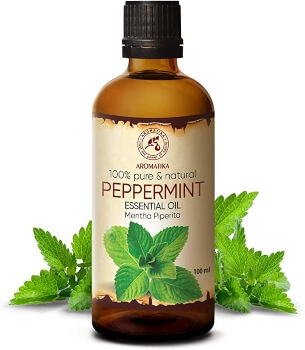
Source: amazon.com.au
Peppermint essential oil is a particularly strong mint oil and works well to deter aphids. The oil won’t harm wildlife on application and is non-toxic, so safe to use at any time of day.
Sprayed onto plants, or around pots, when mixed in low concentrations with cold water, mint essential oil is an incredibly effective deterrent against aphids, which won’t harm your garden or the wildlife in it.
Pros
Cons
4. VPG Natural Guard Insecticidal Soap
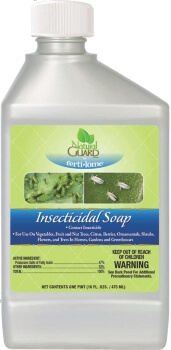
Source: amazon.com.au
Natural Guard produce a wide range of garden treatments, but their insecticidal soap is a good go-to measure against most pests, including aphids.
Its active ingredient is potassium salt, which dehydrates insects on contact, but will not harm others that touch it. The citronella scent will also help to protect the plant from future infestations for up to a week afterward.
One word of caution with any insecticidal soap is that you should always dilute slightly less than the suggested dose as any fragrance included in the ingredients can burn plant leaves.
Pros
Cons
DIY Aphid Treatments
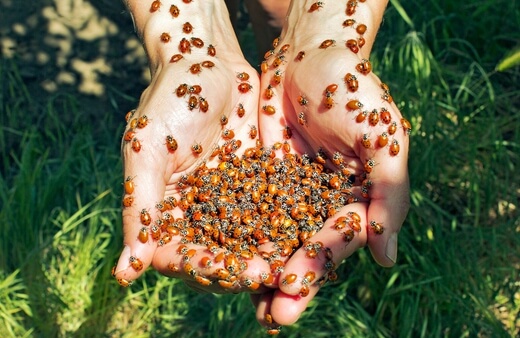
There are loads of DIY aphid treatments touted around the internet, but the vast majority just don’t work. If you’ve ever tried mixing garlic tea to spray on your plants, you’ll know that it works well to prevent spiders, slugs, snails, and other pests, but makes very little difference to aphids despite their dislike of alliums.
The single most effective way to treat aphids is also the least harmful to your garden, and probably the easiest too; release ladybugs, and encourage birds. Releasing ladybugs and feeding birds in the garden means introducing natural aphid predators. If predators exist they will manage your pest populations for you.
Another option is a simple organic insecticide you can make yourself. Mix two tablespoons of bicarbonate of soda, a few drops of lavender, mint, or marigold essential oil, and a few drops of vinegar into two litres of lukewarm water.
When it cools, use it to fill spray bottles. This will dehydrate aphids, and break their lifecycle, but unfortunately has little effect on their eggs, so will need repeat applications for several weeks.
Aphids Frequently Asked Questions
Are aphids harmful?
Aphids cause very little damage to mature plants and are not harmful to your overall garden health. However, they do cause significant problems on young annual crops, where they prevent buds from forming, and stunt growth, particularly on legumes.
Do aphids bite humans?
There are more than 4000 species of aphids on the planet and there are only two that are capable of piercing human skin; pea aphids and gall-forming aphids. They will not intentionally bite humans and will cause very mild rashes.
Where do aphids lay eggs?
Aphids lay their eggs on the underside of leaves, where they are protected from rainfall, and hidden from predators. The ridges along the underside of leaves also provide a food source when the eggs hatch.
How do aphids survive winter?
Aphids lay their final batch of eggs in early winter or late autumn, either on the underside of plant leaves or directly into the soil. As leaves fall, they form a protective mat around aphid eggs. Aphid eggs can survive down to -42°C.
Wrapping Up Our Guide on Aphids
Aphids are garden pests. I can’t deny that. But, they are also an important part of a well-balanced garden ecosystem, and part of the food chain. Removing aphids entirely will simply lead to future infestations, without the natural predators to deal with them.
Leaving log piles, and messy sections of the garden will help to reduce aphid numbers and encourage wasps, spiders, and birds. For crops, net them securely with fine insect mesh, and always check the leaves and shoots of young plants.
You can treat aphids and manage their population in any garden with just a few simple tricks from this article.
Published on October 31, 2022 by Gary Clarke
Last Updated on October 25, 2023




